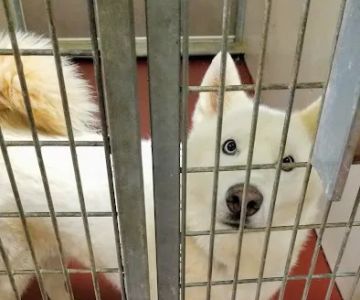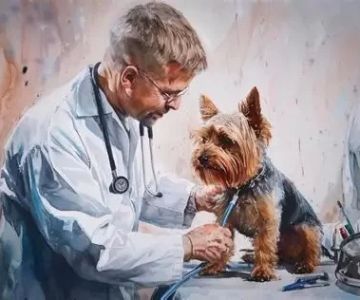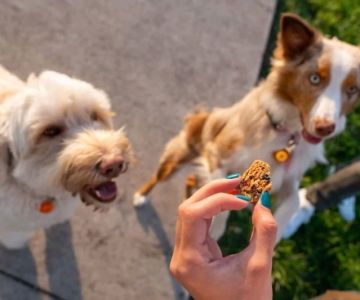- 1. Why Grooming Your Short-Haired Dog is Important
- 2. Essential Grooming Tools for Short-Haired Dogs
- 3. Step-by-Step Guide to Grooming a Short-Haired Dog
- 4. Common Grooming Issues with Short-Haired Dogs
- 5. Additional Dog Care Tips for Short-Haired Breeds
1. Why Grooming Your Short-Haired Dog is Important
When it comes to caring for your short-haired dog, grooming is an essential part of maintaining their overall health and appearance. Many dog owners assume that short-haired dogs don't require as much grooming as their long-haired counterparts, but that’s far from the truth. Regular grooming helps to remove dead hair, dirt, and loose fur, preventing matting and ensuring your dog’s coat remains shiny and healthy.
For short-haired dogs, grooming is also about hygiene and comfort. Their coats may shed more frequently, and grooming helps to manage that shedding, keeping your home cleaner. It’s also a great opportunity to check for skin conditions or parasites such as fleas and ticks, which can be harder to spot under a dense coat. In this guide, we will walk you through the steps to properly groom your short-haired dog, along with the tools you'll need and tips for a stress-free grooming session.
2. Essential Grooming Tools for Short-Haired Dogs
Before diving into the grooming process, it’s important to have the right tools on hand. Here are the key tools you’ll need to properly groom your short-haired dog:
1. Slicker Brush: A slicker brush is great for short-haired dogs, as it helps remove loose hair and dirt from their coat without damaging their skin. Its fine, short bristles are perfect for removing mats and tangles that can form in a short coat.
2. Rubber Grooming Mitt: A rubber grooming mitt is a wonderful tool for removing loose fur. It’s gentle on your dog’s skin and works well for short-haired dogs, as it helps to remove dead hair while providing a massage-like experience, which most dogs enjoy.
3. Nail Clippers: Regularly trimming your dog’s nails is an important part of grooming. Long nails can cause discomfort or lead to health problems. A pair of sharp, high-quality nail clippers is essential to prevent overgrowth.
4. Ear Cleaning Solution: Short-haired dogs are still prone to earwax buildup, especially if they have floppy ears. Regular ear cleaning can help avoid infections. Make sure to use a dog-specific ear cleaning solution and soft cotton balls or pads for this task.
5. Dog Shampoo: Choose a mild, dog-safe shampoo that’s suitable for your dog’s skin type. Short-haired dogs tend to have sensitive skin, so avoid harsh chemicals that could irritate them. A soothing, gentle shampoo will keep their coat healthy and shiny.

845 W Ridge Rd, Gainesville, GA 30501, USA
See Details3. Step-by-Step Guide to Grooming a Short-Haired Dog
Grooming your short-haired dog can be a simple and enjoyable experience for both you and your pet. Follow these steps to ensure that your dog’s grooming session goes smoothly:
1. Brush the Coat: Start by brushing your dog’s coat to remove any loose fur, dirt, or debris. Use the slicker brush or rubber mitt to gently work through the coat, focusing on areas that may have tangles or mats. Brush in the direction of the hair growth, being careful not to pull on the skin.
2. Bath Time: After brushing, it’s time for a bath. Make sure to use lukewarm water and a mild dog shampoo. Wet your dog’s coat thoroughly, avoiding the face and ears, and apply the shampoo. Gently massage the shampoo into their coat and rinse thoroughly to remove all product. Be sure to dry your dog well with a towel afterward to avoid any damp spots that could lead to irritation.
3. Nail Clipping: Next, trim your dog’s nails. Hold their paw gently and clip the nails carefully, taking care not to cut into the quick (the pink part of the nail that contains blood vessels). If you’re unsure, it’s best to consult a professional or your vet for guidance on proper nail trimming.
4. Ear Cleaning: After the bath, check your dog’s ears for any signs of dirt or wax buildup. Use an ear cleaning solution to gently clean the inside of their ears using a cotton ball or pad. Never insert anything into the ear canal—just clean the outer ear gently.
5. Final Touches: Once the bath and nail trimming are done, give your dog one final brush to ensure their coat is smooth and free from any stray hairs. This is also a great time to check their eyes for any discharge or irritation, which could be a sign of infection.
4. Common Grooming Issues with Short-Haired Dogs
While short-haired dogs are generally easier to groom than long-haired breeds, there are still some common issues that can arise during grooming. Here are some things to look out for:
1. Excessive Shedding: Short-haired dogs often shed more than long-haired breeds. Regular grooming can help manage this, but some shedding is natural. If you notice excessive shedding or bald spots, it could be a sign of an underlying health issue, and it’s best to consult your veterinarian.
2. Skin Sensitivity: Short-haired dogs are more prone to sunburn and skin irritation, especially in areas where the fur is thin. After grooming, make sure to apply a sunscreen specifically formulated for dogs if your pet will be outside for extended periods.
3. Ingrown Hairs: While uncommon, ingrown hairs can sometimes develop in short-haired dogs, especially in sensitive areas like the neck or under the arms. If you notice bumps or irritation, gently check the area and seek professional advice if necessary.
5. Additional Dog Care Tips for Short-Haired Breeds
In addition to regular grooming, short-haired dogs benefit from a few extra care practices to keep them happy and healthy:
1. Keep Them Hydrated: Ensure that your dog always has access to fresh, clean water, especially after grooming or playtime. Proper hydration is key to keeping their skin and coat healthy.
2. Provide a Balanced Diet: A healthy diet with the right nutrients will support your dog’s coat, skin, and overall health. Look for high-quality dog food that contains omega fatty acids to promote a shiny, smooth coat.
3. Regular Vet Visits: Regular check-ups with your veterinarian are essential for maintaining your dog’s health. They can help identify any potential issues early on and offer advice on grooming and general care.










